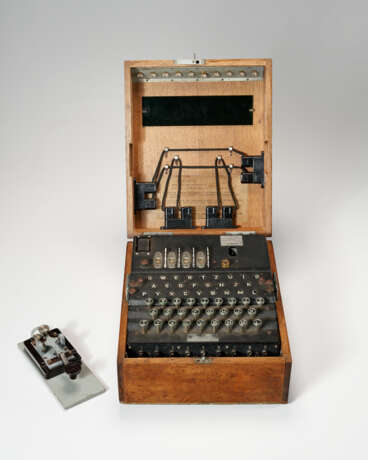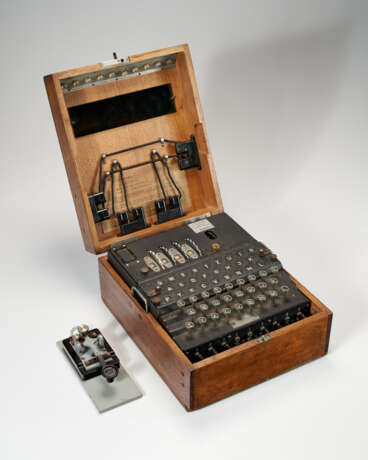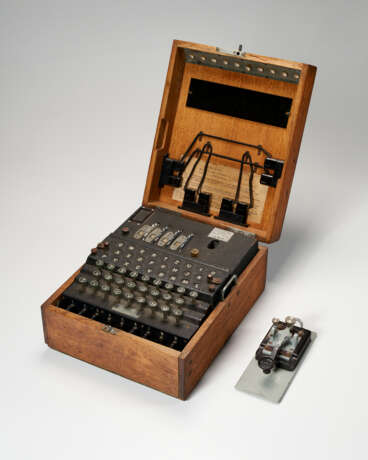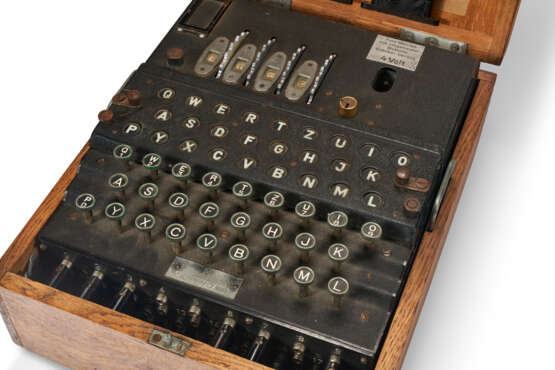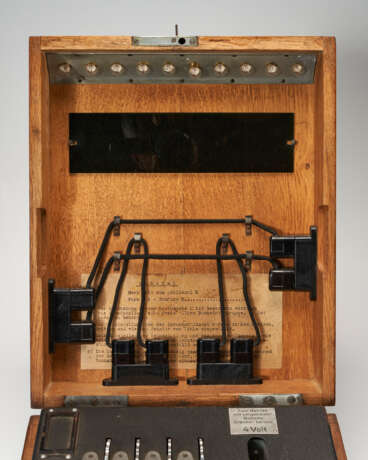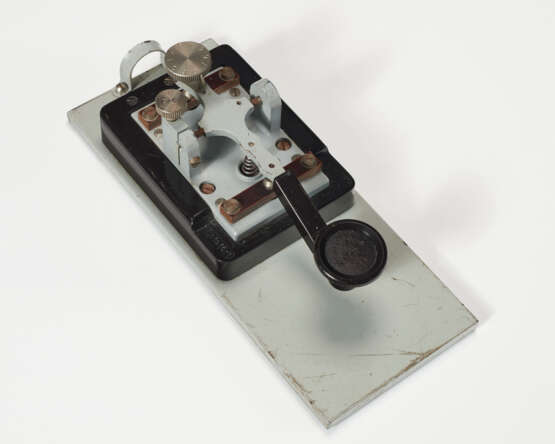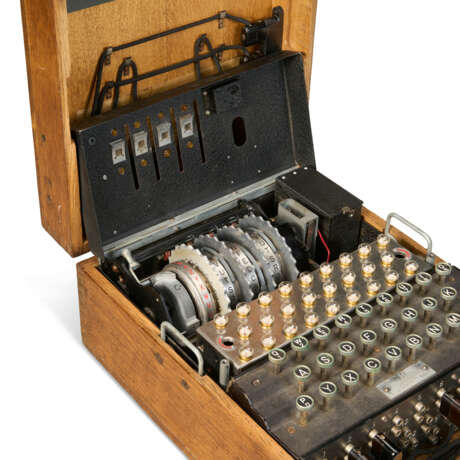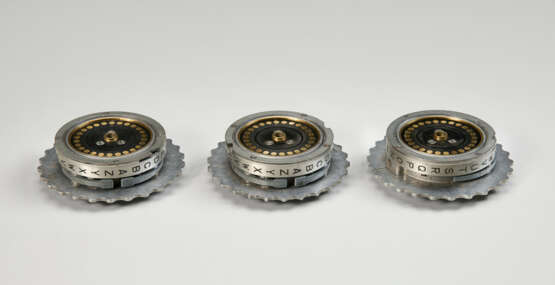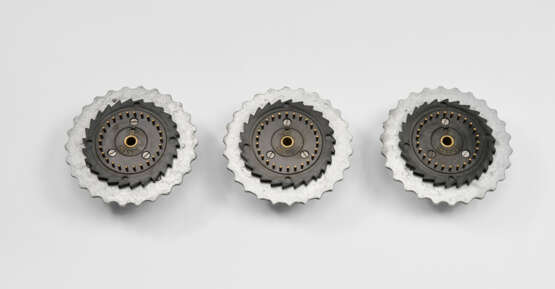ID 1279151
Lot 14 | A FOUR-ROTOR ENIGMA CIPHER MACHINE
Estimate value
$ 250 000 – 350 000
HEIMSOETH & RINKE; NOVEMBER, 1941
Serial number M5521
with complete electrical wiring, three rotors (I, III & VII), Beta rotor and reflector all with matching serial numbers, raised 'QWERTZ' keyboard with crackle black painted metal case, plugboard in the front with eight patch leads, four spare patch leads to lid which is fitted with spare bulbs and a previously unknown, probably unique, metal security screen, housed in wooden carrying case -- with a German Navy telegraph key.
One of the rarest and hardest Enigmas to decrypt.
Allied efforts to break the M4, under the leadership of Alan Turing and Joe Desch, led to the development of the first programmable computer. Early in World War II, Karl Dönitz, head of Germany’s U-boat fleet, had concerns over repeated Allied successes against his submarines. Despite the fact that the Allies were by then regularly reading messages coded by earlier versions of the Enigma, German investigators determined that it was impossible for the Allies to read Enigma messages. It was thought that the Allies had used espionage, or radar, or simply had chanced upon the submarines. Nevertheless, Dönitz ordered the development of a special 4-rotor Enigma for use by the German Navy's U-boat fleet. The machine’s use of 4 rotors, instead of 3, and the operator’s ability to select these from a pool of 8 interchangeable rotors, together with stricter operating procedures, gave the M4 Enigma a much higher level of encryption. For 10 months – a long time in war – the M4 defeated the previously successful decryption of Allied codebreakers.
6 ½ in. (16.5 cm.) high; 11 ¼ in. (28.6 cm.) wide, 13 11/16 in. (34.8 cm.) deep overall (case)
Provenance
Anonymous sale, Bonhams, New York, 7 December 2016, lot 1088.
Acquired at the above sale by the late owner.
Exhibited
Seattle, Living Computers: Museum + Labs, Enigma and Turing, 1 July 2017-1 July 2020.
Further details
This lot is subject to additional disclaimers. Please carefully review Section E(2), subsection (m) “Vintage Computers and Machines”.
| Place of origin: | Western Europe, Germany, Europe |
|---|---|
| Auction house category: | All other types of objects |
| Place of origin: | Western Europe, Germany, Europe |
|---|---|
| Auction house category: | All other types of objects |
| Address of auction |
CHRISTIE'S 8 King Street, St. James's SW1Y 6QT London United Kingdom | |
|---|---|---|
| Preview |
| |
| Phone | +44 (0)20 7839 9060 | |
| Buyer Premium | see on Website | |
| Conditions of purchase | Conditions of purchase |
